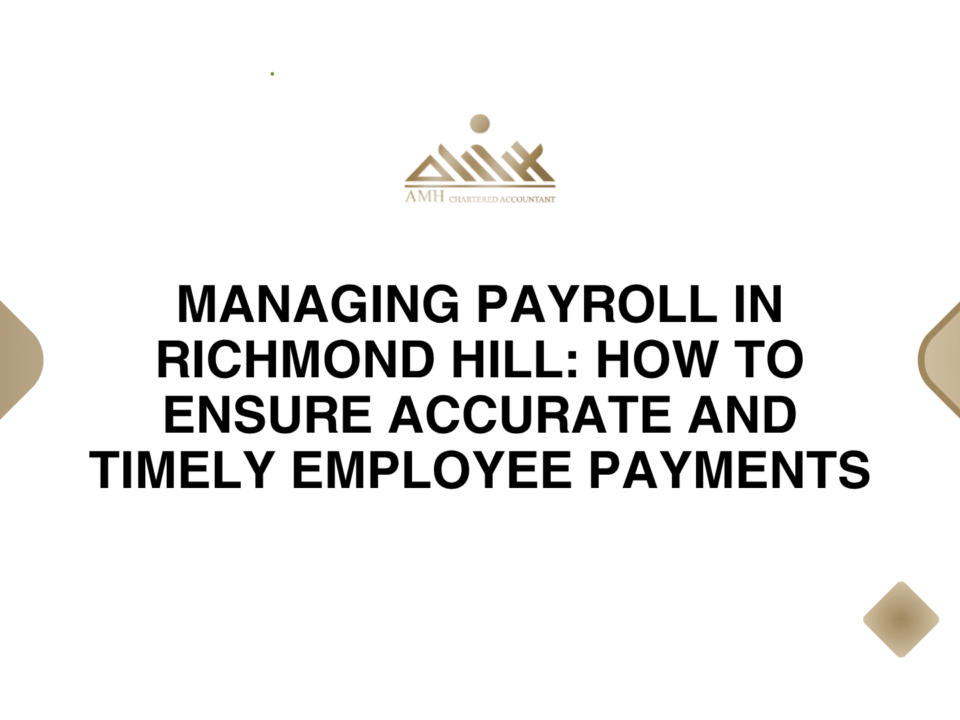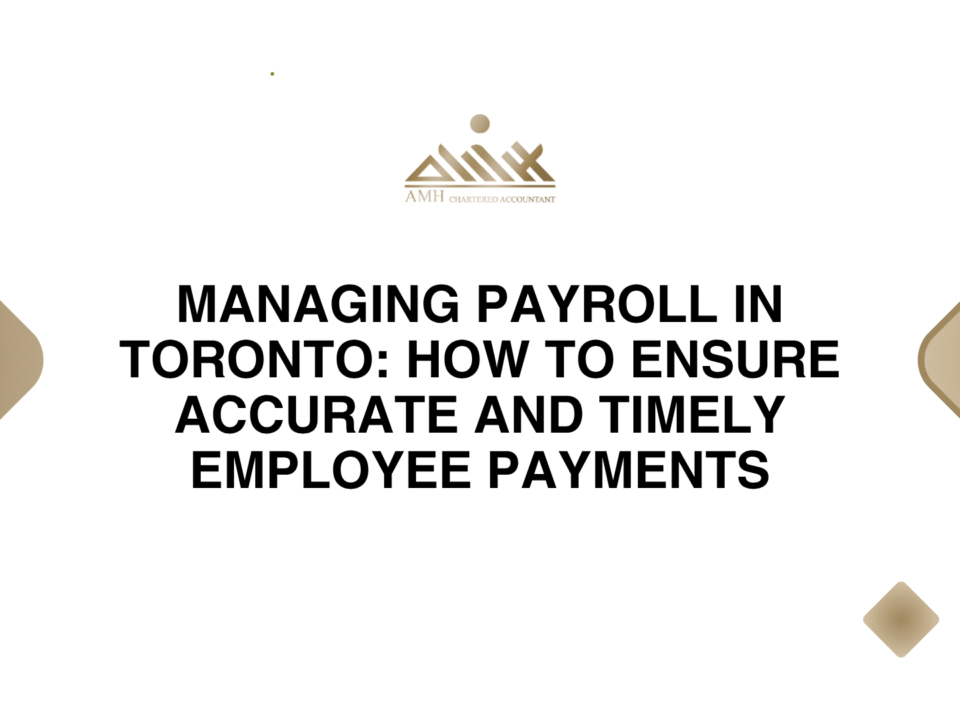
4 Essential Steps to Set Up a Simple Accounting System for Startups
June 1, 2025
How to Choose the Right Accounting Software for Your Business Size
June 5, 2025Accounting for R&D Projects: How to Maximize Tax Benefits
Accounting for R&D projects is more than just a financial necessity; it’s a way to capture potential tax credits and deductions that could significantly reduce your business’s overall tax liability. The SR&ED tax credit, for example, is one of the most generous incentives offered by the Canadian government to encourage businesses to invest in innovative projects.
However, the R&D accounting process requires careful tracking, documentation, and reporting to ensure compliance and to fully realize the available benefits. This is where the expertise of a skilled accounting professional comes into play. Whether you’re a start-up or an established enterprise, understanding how to account for your R&D activities and manage your tax filings is essential.
In this article, we’ll cover everything you need to know about accounting for R&D projects, maximizing tax incentives, and avoiding common mistakes.
What Qualifies as R&D for Tax Purposes?
Before you can account for your R&D projects and claim tax benefits, you need to understand what qualifies as eligible R&D for tax purposes. In Canada, the SR&ED program defines eligible R&D as:
Systematic investigations or experiments carried out to discover new information or develop new products, processes, or materials.
Experimental development aimed at creating or improving products, processes, or technologies.
Applied research involving scientific or technical knowledge, conducted to solve a specific problem.
The CRA (Canada Revenue Agency) has specific criteria for determining whether R&D activities are eligible for tax credits. These activities must involve scientific or technological uncertainty, where the outcome is not readily achievable by applying existing knowledge. Simply put, the project must involve experimentation and innovation that pushes the boundaries of existing technology or processes.
Key Tax Incentives for R&D in Canada
Canada offers several tax incentives for businesses involved in R&D. These incentives are designed to encourage innovation and make it more affordable for companies to invest in R&D activities. Below are the main tax benefits available:
1. Scientific Research and Experimental Development (SR&ED) Tax Credit
The SR&ED Tax Credit is one of Canada’s most valuable programs for R&D tax benefits. It is available to businesses that incur eligible R&D expenses related to scientific or technological research and development. This program provides both refundable and non-refundable tax credits, depending on the type of corporation.
The SR&ED tax credit offers:
Federal tax credit: Generally, 15% of eligible R&D expenditures for small businesses (Canadian-controlled private corporations or CCPCs) and 10% for other corporations.
Provincial tax credits: Many provinces offer additional tax credits, such as Ontario’s SR&ED Tax Credit, which can provide an additional 4.5% to 10% of eligible expenses.
Eligible R&D expenses include wages for employees directly involved in R&D, materials, subcontractor costs, and overhead expenses related to the R&D project.
2. Capital Cost Allowance (CCA)
Capital Cost Allowance (CCA) allows corporations to deduct the cost of capital assets used in R&D activities over several years. These assets may include equipment, machinery, or buildings used in the research and experimental development process.
For example, if you purchase specialized equipment for your R&D lab, you can deduct a portion of the equipment’s cost over its useful life. The CCA system helps businesses reduce taxable income and provides tax savings on assets that are essential for innovation.
3. Investment Tax Credits
In addition to the SR&ED Tax Credit, businesses involved in R&D may be eligible for investment tax credits related to the purchase of machinery and other capital expenditures. These credits can offset the costs of acquiring new technologies, machinery, or equipment that directly support innovation.
Businesses investing in clean energy technologies, for example, can receive tax credits to support their investments in environmentally sustainable R&D.
The Accounting Process for R&D Projects
Effectively managing the accounting for R&D projects requires a structured approach to track eligible expenses and document the activities associated with each R&D initiative. Here are the key steps in accounting for R&D projects:
Step 1: Tracking R&D Expenditures
The first step is to track all R&D-related expenses. This includes:
Wages and salaries: Pay for employees working directly on R&D activities.
Materials and supplies: Costs of materials consumed during research and development.
Subcontractor costs: If you hire external consultants or contractors for R&D, their fees should be included.
Overhead costs: A portion of your overhead costs, like utilities or office space, may be allocated to the R&D project.
Having detailed records of all expenditures associated with your R&D project ensures you can maximize your SR&ED claims and other tax incentives.
Step 2: Documenting R&D Activities
Proper documentation is crucial when claiming SR&ED tax credits. You must be able to demonstrate that the work you are conducting qualifies as R&D and that it involves scientific or technological uncertainty. To document R&D activities:
Keep detailed records of your experimental process, including any challenges or uncertainties faced during the project.
Maintain timesheets or logs for employees working on R&D tasks, outlining the specific research activities they were involved in.
Document any technical reports or prototypes that were created as part of the R&D process.
This documentation is essential for both your internal accounting records and your SR&ED claim submission.
Step 3: Allocating Costs to R&D Projects
You will need to allocate costs properly to R&D projects to ensure accurate accounting and tax claims. This includes:
Direct costs: Directly related to the R&D project (e.g., employee wages, materials).
Indirect costs: Costs that are necessary for the project but not directly involved in R&D (e.g., utilities, office space). These should be prorated based on the time and space used for R&D activities.
Step 4: Preparing and Filing SR&ED Claims
Once you have tracked and documented your R&D activities, the next step is to prepare and file your SR&ED claims. The process involves:
Filling out the SR&ED tax credit forms: The CRA provides forms specifically for SR&ED claims, including Form T661 for claiming expenditures and Form T2 for corporate tax filings.
Submitting your claim: Submit your claim along with your T2 Corporate Tax Return. If eligible, you can receive a refundable or non-refundable tax credit.
CRA Review: The CRA will review your SR&ED claim to ensure it complies with the program’s guidelines. Be prepared to provide additional documentation or clarification if needed.
How to Maximize Tax Benefits from R&D Projects
To fully benefit from the R&D tax incentives available, businesses need to ensure that they’re taking the right steps to maximize tax savings. Here are some key strategies:
1. Accurate Documentation and Record-Keeping
Accurate and thorough documentation is the foundation of maximizing tax benefits for R&D projects. Make sure to:
Maintain clear records of all R&D activities, expenses, and time spent on research.
Organize and store documentation for future reference in case of a CRA audit.
2. Understanding Eligible Expenses
Ensure that you are aware of which expenses are eligible for tax credits under the SR&ED program. This includes wages, materials, overhead, and subcontractor costs directly related to the R&D project.
3. Engaging a Professional to File SR&ED Claims
Given the complexity of R&D tax claims, it is highly recommended that you engage a professional accountant or SR&ED consultant to help you with the process. They can:
Ensure that all eligible expenses are claimed.
Help with preparing proper documentation and filing.
Provide expert advice on tax planning strategies to maximize your claims.
Common Mistakes to Avoid When Accounting for R&D Projects
When accounting for R&D projects, business owners should avoid common mistakes, such as:
Failing to track all eligible expenses: Ensure every dollar spent on R&D is recorded and accounted for.
Not maintaining proper documentation: Without detailed records, your SR&ED claims could be rejected or reduced.
Overlooking tax credits: Many businesses miss out on available tax credits due to a lack of knowledge or oversight.
How AMH Chartered Professional Accountant Can Help with R&D Tax Claims
At AMH Chartered Professional Accountant, we specialize in helping businesses take full advantage of R&D tax incentives. Our team provides:
SR&ED tax credit preparation: We help ensure that your claims are accurate, complete, and maximized.
Tax planning: We assist with long-term tax strategies to reduce your overall tax liability.
R&D accounting: We track, document, and allocate your R&D expenses efficiently.
The Long-Term Benefits of Investing in R&D
Investing in R&D can drive business growth and innovation, and the tax incentives available make it more affordable. By claiming the available R&D tax credits, businesses can reinvest those savings into further innovation, marketing, or operational improvements.
How to Leverage R&D Tax Benefits for Business Growth
By leveraging R&D tax credits, businesses can free up cash flow for further growth initiatives, such as expanding operations, hiring new employees, or developing new products. These credits can help your business stay competitive in the market while continuously innovating.
Conclusion: Maximizing Tax Benefits for Your R&D Projects
Accounting for R&D projects and maximizing the tax benefits available requires careful tracking, documentation, and strategic planning. By understanding the key tax incentives available, such as the SR&ED tax credit, Capital Cost Allowance (CCA), and other investment tax credits, businesses can reduce their tax liability and invest in innovation.
At AMH Chartered Professional Accountant, we are dedicated to helping businesses in the GTA and beyond optimize their R&D tax claims and navigate the complexities of R&D accounting.
FAQs
What is the SR&ED tax credit?
The SR&ED tax credit is a program that provides businesses with tax incentives for investing in scientific research and experimental development.
What expenses are eligible for the SR&ED tax credit?
Eligible expenses include wages for R&D employees, materials used in research, subcontractor fees, and overhead costs related to the R&D project.
How can AMH help with R&D tax claims?
AMH Chartered Professional Accountant helps businesses prepare and file SR&ED claims, ensuring that all eligible expenses are claimed and maximizing tax benefits.




